Elevate your home with expert tips on stylish décor, kitchen upgrades, and bedroom makeovers. Discover furniture ideas and real estate insights!
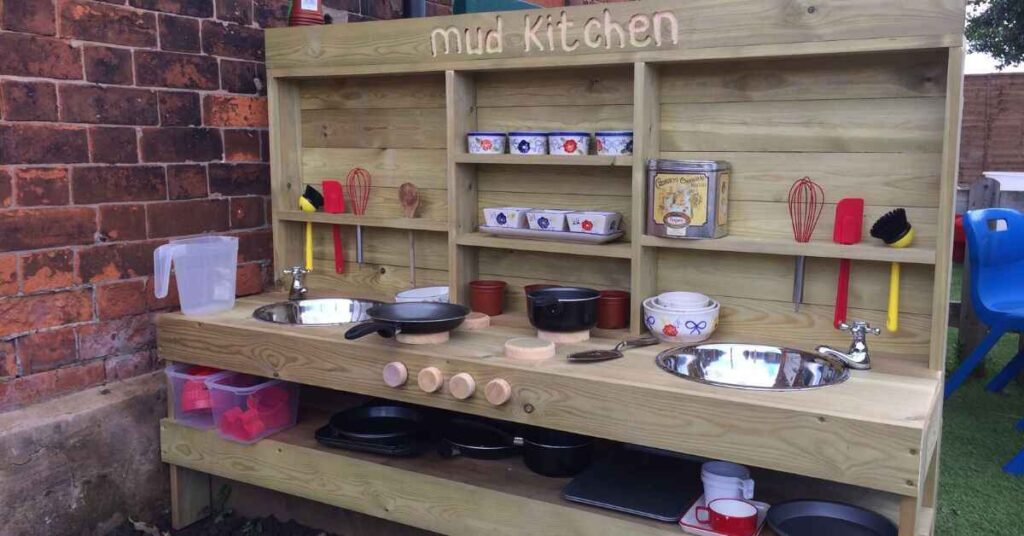
A mud kitchen is an outdoor play area where children mix mud, water, and other natural materials to create imaginative dishes. It typically includes basic kitchen elements like sinks and stoves, encouraging hands-on, creative play. Mud kitchens help kids connect with nature while developing their motor skills and fostering creativity.
Think of the possibilities where your child is able to cook mud pies and make salads out of the fall leaves, all at the comfort of the backyard. Such ideas as a mud kitchen turn a plain backyard into the largest playground that occurs where nature inspires creativity. It is not just play, but the way to discover more, go on a journey, have fun and avoid screen time.
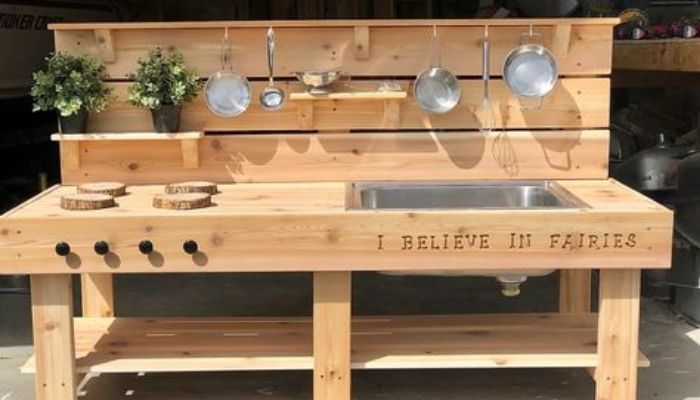
Building a DIY mud kitchen starts with choosing the right materials, such as durable wood or repurposed pallets. Begin by constructing a simple frame with a countertop, leaving space for a sink or basin. Add shelves or hooks for storage, and consider adding a small faucet or water source to complete the setup.
Once the structure is built, personalize it with child-friendly features like painted designs or themed decorations. Incorporate natural elements like stones, sticks, and leaves to inspire imaginative play. Finally, ensure the kitchen is sturdy and safe, securely anchoring it to the ground if necessary.
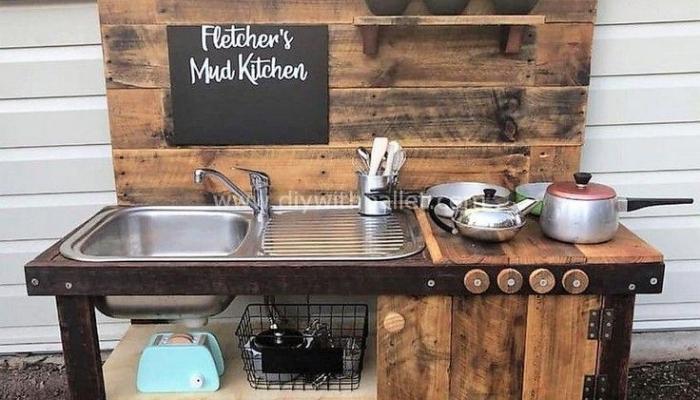
A pallet mud kitchen is a versatile and budget-friendly project that repurposes old pallets into a functional outdoor play area. By arranging and securing pallets to form a countertop, shelves, and a back panel, you create a sturdy base for imaginative play.
To finish, add simple touches like a plastic basin for a sink and hooks for hanging tools. Ensure the pallet structure is properly treated or sealed to withstand weather conditions and provide a safe play environment.
Also Read This Blog: dove grey light grey kitchen cabinets with dark countertops
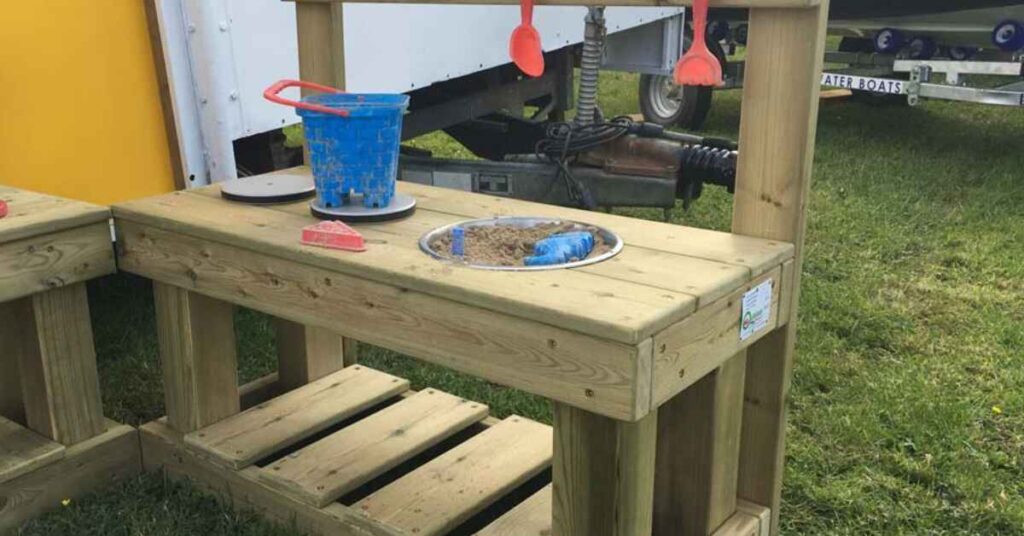
All mud kitchen needs to have are basic elements, which include pots, pans, and utensils that will help children to imitate real-life cooking and even the use of the mixer. These items foster creativity allowing the children to create their own concoctions and concoct various recipes using mud and water resulting to improvement of the children’s sensory stimulation.
Burying tools such as funnels, colanders and measuring cups make introduce different texture and uses into the sand box. These accessories promote theme and variety, instance range and option that children can use in solving issues in many ways.
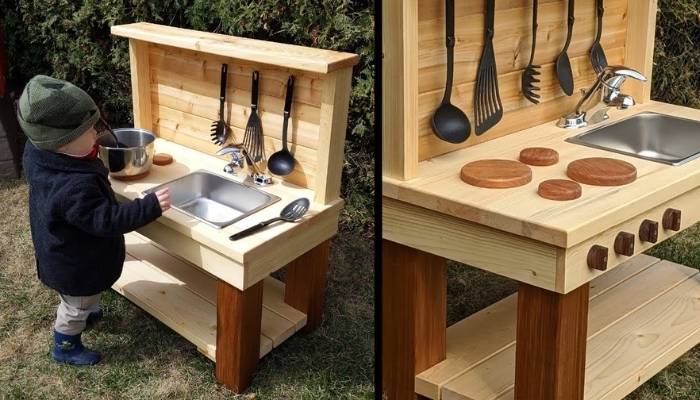
To build a mud kitchen for kids, start by selecting durable materials such as treated wood or sturdy plastic. Construct a basic frame with a countertop and storage areas, and install a simple sink or basin for water play. Ensure all edges are smooth and the structure is securely anchored to prevent accidents.
Personalize the kitchen with fun, decorative elements like colorful paint or themed designs. Add practical features such as hooks for utensils and a small faucet or container for water, making it a versatile and engaging play area for children.
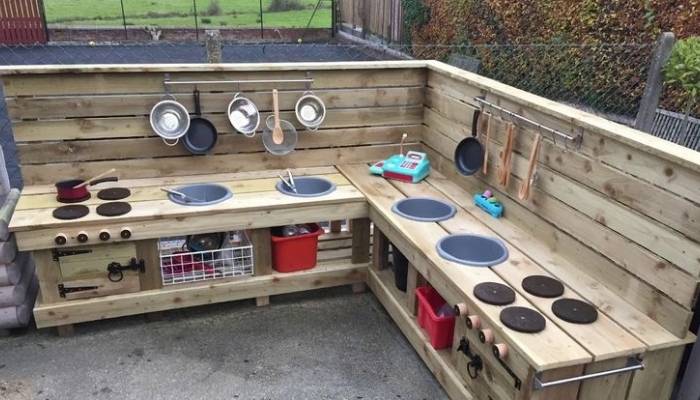
To create a mud kitchen with your bare hands, begin by choosing materials that should be resistant to moisture such as pressure treated lumber or pallets among others. Set up a frame for the base and install the flat countertop, the sink-cum-storage part and the shelves on the legs-when putting up these parts see to it that all brackets are well fixed and the pieces levelled to ensure that the unit is stable.
Once the construction is done, paint the structure with kid- friendly colors, add outlook that may include among others painted designs, safe paint for children among other things, and incorporate as many items like hangers for utensils and source of water among others that can be simple but should be children friendly. The mud kitchen must be well fixed in the ground and all the parts when installed should be free from sharp points to minimize on accidents during the play.
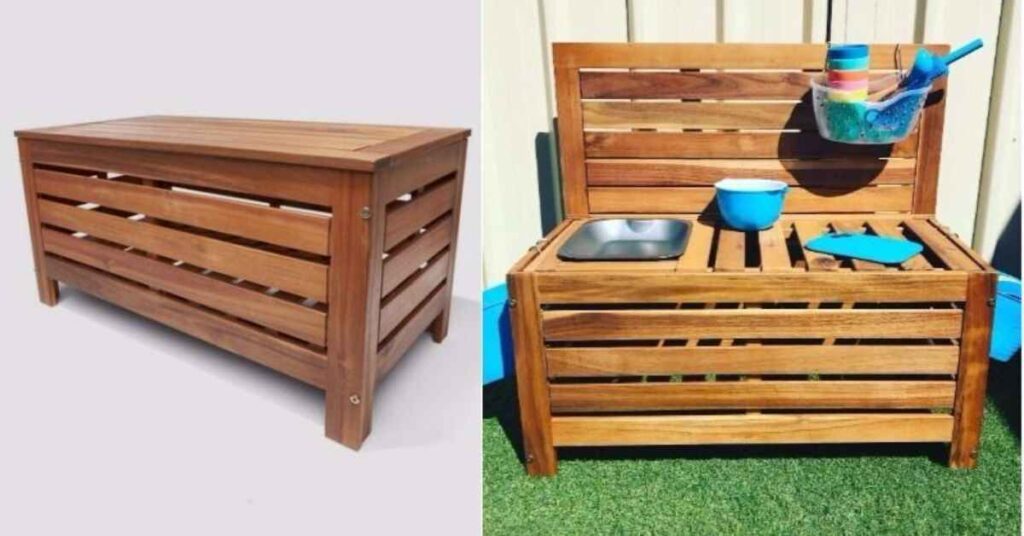
An IKEA hack mud kitchen involves transforming affordable IKEA furniture into a functional outdoor play area for kids. Start by selecting pieces such as a kitchen playset or storage units, then modify them by adding a weather-resistant countertop and a sink made from repurposed containers.
Enhance the IKEA hack by incorporating additional features like hooks for utensils, shelves for storage, and outdoor-safe paint or sealant. This approach allows you to create a customized mud kitchen that is both stylish and practical, using readily available materials and DIY modifications.
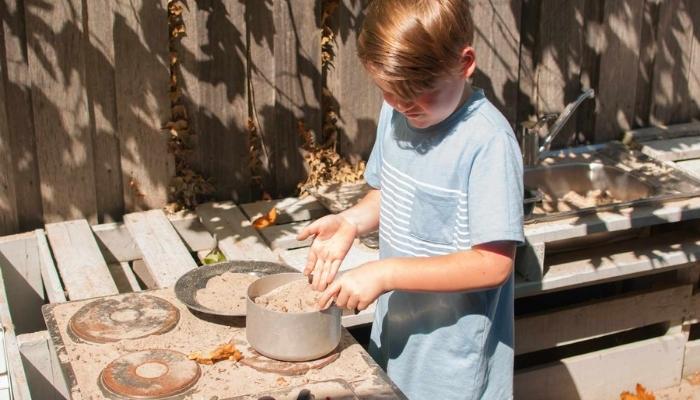
Mud kitchens as a resource give children opportunities freely to come up with their own games and role play using natural elements. Obsessive–compulsive disorder This kind of play engages creative thinking and novelty angle, and it develop problem solving skills and artisetic disturbance.
During play, children can manage to engage in an activity which involves the use of mud and utensils in a kitchen and this assists in the development of motor skills. Activities like stirring, scooping and pouring helps to develop hand-eye coordination and fine motor skills which are imperative for the day to day activities and physical development.
Since tools are used in mud kitchens, the children are able to share with their peers in their play activities. This cooperative play makes the children learn interpersonal relationships skills which include manners of communication, ways of coming to an agreement and even handling conflicts.
The different texture of the mud and water help the children exercise their sense. Regular contact with various materials develops sensory-motor mechanisms necessary for the cognitive and emotional development of a child plus more specifically the fundamentals of sensory integration.
Play with a mud kitchen encourages children to go out, play and dirty which is a positive encouragement for physical activity and connection with nature. This is an excellent form of play as it gets rid of unhealthy energy, helps use our muscles, get fresh air and also be more conscious of nature.
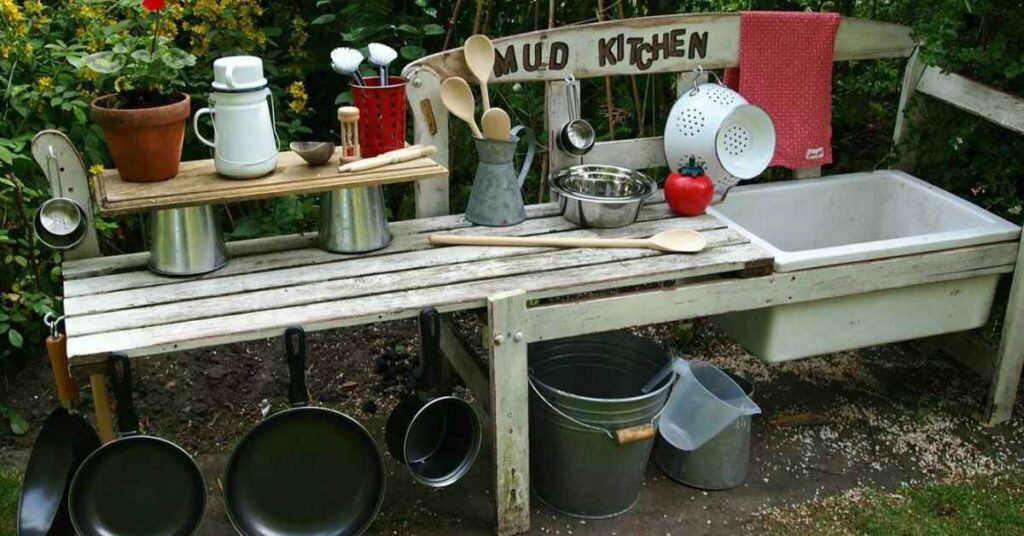
Mud kitchens are a great way of providing the children with opportunities to engage in creative play as they mimic the role of preparation and cooking using natural items like mud, water, leaves, and twigs to prepare ‘mud’ pies, soup etc.
Further on, children may engage in non-cooking activities, occupying themselves with spoons, cups and funnels to scoop, pour and stir as in the real table. Crawling, grabbing, sliding, climbing etc., affect their motor skills and capability of solving problems and at the same time enjoy the exploration of new things in play area.

To maintain and care for your mud kitchen, regularly clean the surfaces and utensils to prevent build-up of mud and dirt. Use a mild soap and water solution to wash away residue, and ensure everything is thoroughly rinsed and dried to avoid mold and decay.
Additionally, inspect the structure for any damage or wear, and perform necessary repairs promptly. Apply a weather-resistant sealant or treatment to protect wooden parts from moisture and extend the life of your mud kitchen. Regular maintenance ensures a safe and enjoyable play environment for your child.
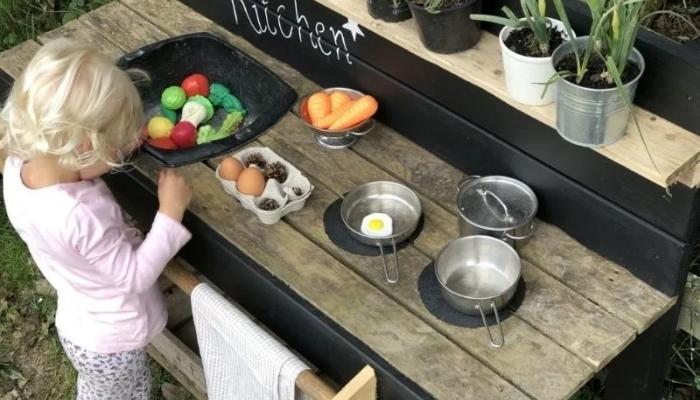
A durable, weather-resistant countertop is essential for a mud kitchen, providing a solid surface for mixing and playing. It should be made from materials like treated wood or plastic that can handle frequent use and exposure to the elements.
Incorporating a sink or basin allows children to experiment with water and mud, adding realism to their play. Choose a design that includes a simple, easy-to-clean basin that can be securely attached and accessible for water play.
Built-in shelves or storage areas are important for keeping play utensils organized. These features allow children to easily access and store their tools, enhancing the play experience and encouraging tidiness.
Ensure the mud kitchen includes safety features such as rounded edges and non-toxic finishes. These elements prevent injuries and ensure the kitchen is safe for children to use during their playtime.
Additional features like hooks for hanging utensils, removable containers for sorting materials, or paintable surfaces allow for customization. These add-ons enhance creativity and provide more ways for children to engage in imaginative play.
How to Maintain and Upgrade Your Mud Kitchen Over Time

When selecting a mud kitchen, ensure it is suitable for your child’s age and developmental stage. Younger children may need simpler designs with safer, rounded edges, while older kids might enjoy more complex setups with additional features for creative play.
Choose a mud kitchen made from robust, weather-resistant materials to withstand outdoor conditions. Look for features such as treated wood or plastic components that can endure frequent use and varying weather, ensuring long-lasting play.
Ensure the mud kitchen includes safety features such as smooth edges, stable construction, and non-toxic finishes. Safety should be a priority to prevent injuries and provide a secure play environment for your child.
Select a mud kitchen that fits well in your available outdoor space. Consider the dimensions of the kitchen and ensure it will not overcrowd the area, allowing sufficient space for your child to play comfortably and safely.
Look for mud kitchens that offer extra features like built-in storage, a water source, or customizable elements. These added features can enhance the play experience, making the kitchen more engaging and functional for your child’s needs.
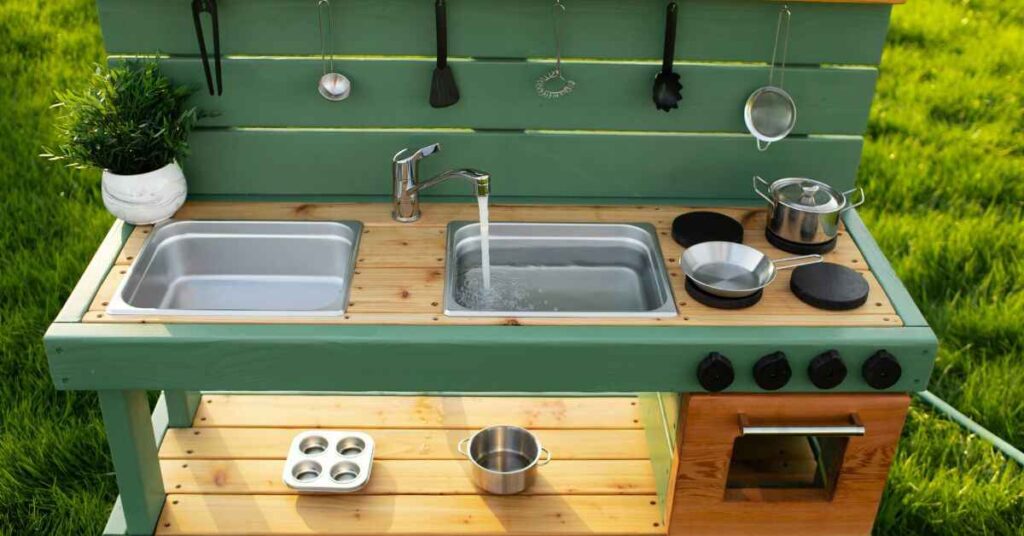
When building a mud kitchen, choose materials that are non-toxic and free from sharp edges to ensure child safety. Ensure that surfaces are smooth and well-finished to prevent splinters or cuts during play. Regularly check for any potential hazards, such as loose parts or exposed nails, and address them promptly.
Additionally, anchor the mud kitchen securely to the ground to prevent tipping or instability. Implement safe water management practices to avoid slips and ensure that all water sources are securely contained. These precautions help create a safe and enjoyable play environment for children.
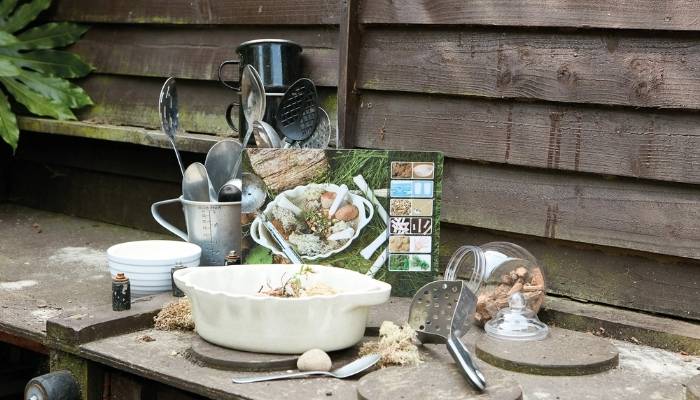
When choosing a mud kitchen from Aldi, it is important to consider its safety into account by making sure that it is crafted from non toxic materials and rounded on the edges. Ensure that all parts are tightly screwed and that none of the edges have rough or sharp surfaces that the child can easily hurt himself/her self while playing.
Further ask that the mud kitchen is fixed in such a way that it cannot be easily knocked down or tipped over. The kitchen also should be checked routinely for any signs of usage, wear or damage to the flooring and such areas should be repaired or replaced immediately to avoid posing any harm to the children at play.
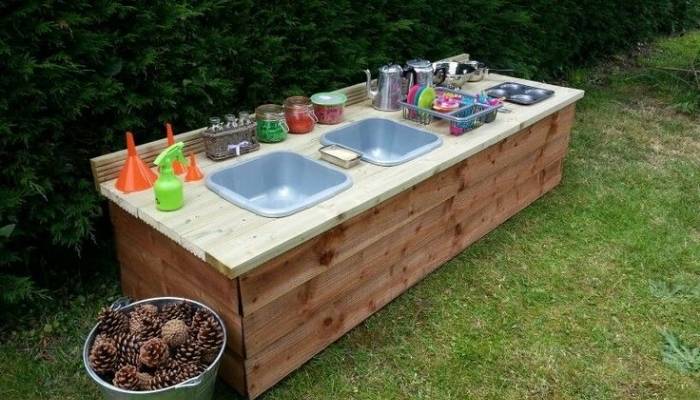
Mud kitchens are a fantastic addition to any garden, sparking creativity and outdoor play for children. You can start simple by using old wooden pallets or crates to build a basic kitchen structure. Add items like pots, pans, and spoons, which kids can use to mix mud, leaves, and other natural ingredients.
Incorporate natural elements like stones, twigs, and shells to inspire imaginative recipes. Install a small water station using a hose or bucket for easy access to water, making playtime even more fun. Don’t forget to designate a storage area for the kitchen tools to keep everything tidy after play.
Also Read This Blog: Modern kitchen spotlight
A mud kitchen is an outdoor play area where children use natural materials like mud and water to engage in imaginative cooking activities. It often includes features like countertops, sinks, and shelves for a realistic play experience.
Yes, mud kitchens are excellent for promoting creativity, improving motor skills, and encouraging outdoor play. They offer a hands-on way for children to develop social skills and sensory awareness while having fun.
To create a simple mud kitchen, start with a sturdy table or platform, add a basin for water, and include various utensils like spoons and cups. Ensure it has safe, rounded edges and provide storage for tools to keep everything organized.
For a mud kitchen, use clean, natural soil that is free from contaminants. A mix of clay and sand works best, creating a good consistency for making and playing with mud. Avoid using soil from polluted or chemically treated areas.
Mud kitchen ideas provide a playful and educational outdoor experience for children. They stimulate creativity and improve motor skills through activities like mixing and pouring. By incorporating practical features and ensuring safety, these setups support imaginative play while promoting social interaction. A well-designed mud kitchen fosters both fun and developmental growth.